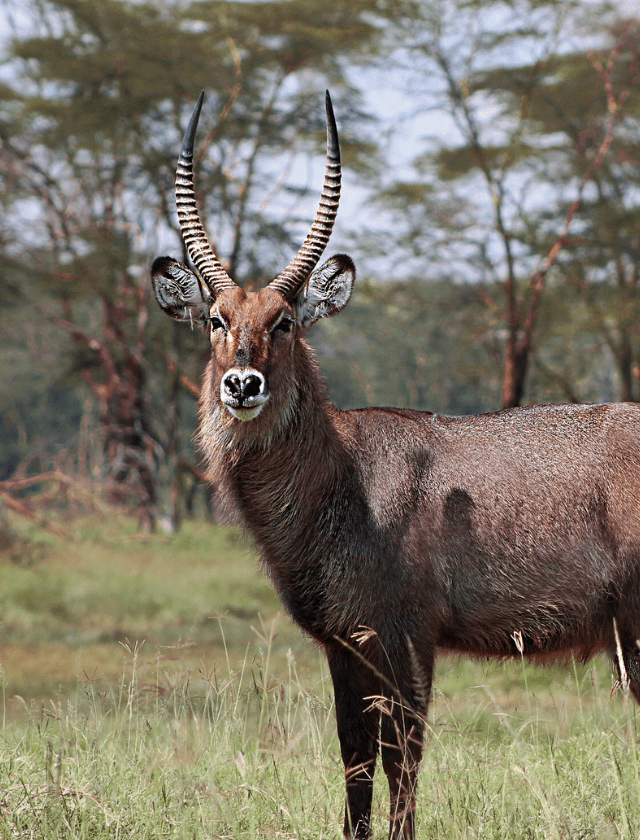The waterbuck is a large and distinctive antelope species found throughout sub-Saharan Africa. They are well known for their shaggy brown coat and white ring on their rump. They are a large animal, with males typically weighing between 200-300 kg and standing around 1.2 meters tall at the shoulder. Females are slightly smaller, weighing around 160-200 kg.
Waterbucks are not typically considered to be dangerous to humans, although they have been known to charge when threatened. They are a popular target for trophy hunting, but conservation efforts have been successful in maintaining healthy populations in many areas.
Waterbucks are found in a variety of habitats, including grasslands, savannas, and woodlands. They are particularly well adapted to living in areas near water, such as rivers, lakes, and swamps, which is where they get their name. They are capable of living in a range of weather conditions, from hot and dry to wet and humid.
Waterbucks are primarily active during the day, with the peak of their activity occurring in the early morning and late afternoon. They are known to form small groups or herds, with males typically occupying territories that they will defend against other males during the breeding season.
As herbivores, waterbucks primarily feed on grasses and other vegetation. They have a specialized digestive system that allows them to extract nutrients from tough plant material, which makes up the majority of their diet. They will also browse on leaves and other soft plant material when available.
Waterbucks are an important prey species for many large predators in Africa, including lions, leopards, and hyenas. However, their large size and strength make them a difficult target for most predators. They are also known for their strong odor, which can act as a deterrent to predators.
In conclusion, the waterbuck is a large and distinctive antelope species found throughout sub-Saharan Africa. While not typically considered to be dangerous to humans, they have been known to charge when threatened. They are well adapted to living in a variety of habitats, including areas near water, and are primarily active during the day. As herbivores, they primarily feed on grasses and other vegetation, and are an important prey species for many large predators in Africa. Conservation efforts are important to ensure the continued survival of this magnificent animal for future generations to enjoy.



